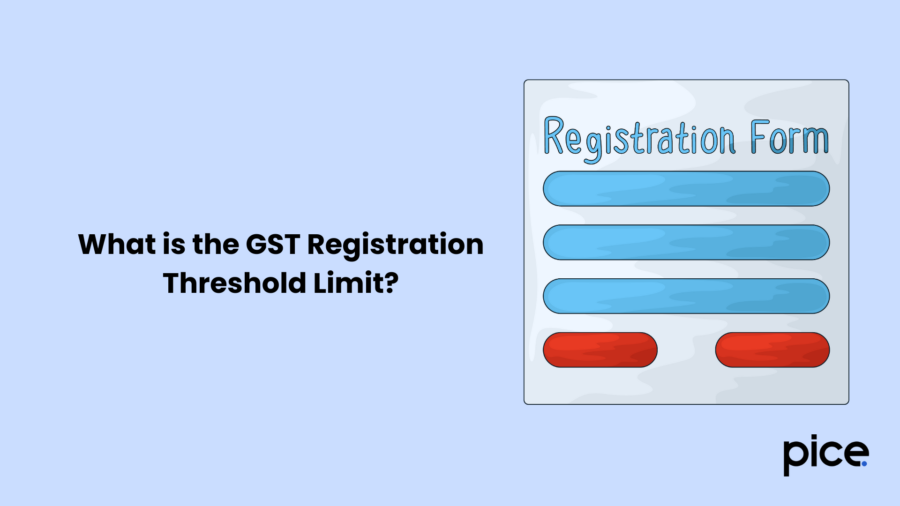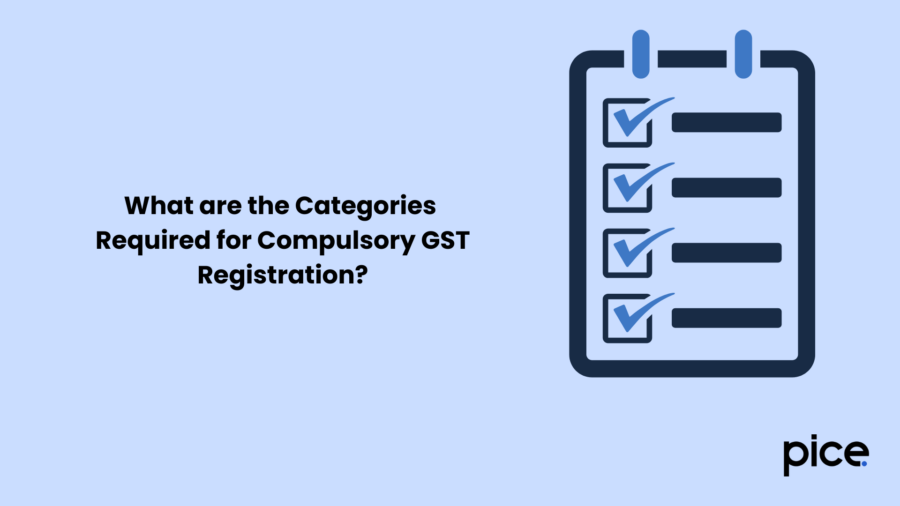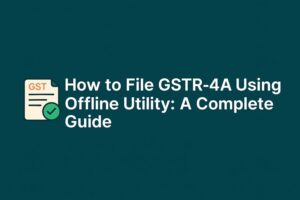Threshold limit for GST Registration for 2025
- 10 Apr 25
- 9 mins

Threshold limit for GST Registration for 2025
Key Takeaways
- GST registration threshold was increased to ₹40 lakhs for most regular states from April 1, 2019.
- Special category states saw their threshold rise to ₹20 lakhs, easing MSME compliance.
- Entities under the new limits aren't required to register for GST unless they opt in voluntarily.
- The composition scheme turnover cap was raised to ₹1.5 crore, enabling simpler quarterly tax filing.
- MSMEs can now focus more on growth by leveraging technology and expert advice to navigate GST rules efficiently.
With an aim to ultimately simplify compliance regulations for various Micro/Small/Medium-sized Enterprises (MSMEs), the GST registration limits have been altered to a great degree. The Goods and Services Tax (GST) Council proposed the alterations in its 32nd meeting, conducted on the 10th of January, 2019.
Further, the decisions were announced by the Central Board of Indirect Taxes and Customs (CBIC). Such modifications to the framework aimed to reduce the overall GST compliance burden on MSMEs. The entities are, thus, able to focus more on their primary business operations.
This blog shall further dive into the details surrounding the threshold limit for GST registration what it entails, things to consider while calculating it and other information.
What is the GST Registration Threshold Limit?

An individual had to previously register for GST if their overall turnover exceeded the limit set at ₹20 lakhs, under regular category states. For special category states, the limit was set to ₹10 lakhs. But from 1st of April 1 2019, the threshold limit for regular category states was reset to ₹40 lakhs. On the other hand, for special category states, the limit was raised to ₹20 lakhs.
Businesses shall voluntarily receive input tax credits alongside other benefits. However, with a turnover below the respective certain limits, business entities do not need to register for GST, compulsorily.
Here is a table demonstrating the same, for comprehensive understanding on your end:
| Supply Types | Regular States | Special Category States | Applicability |
| Goods/Extending Services | Exceeds ₹40 lakh | Exceeds ₹20 lakh | From 1st of April, 2019 |
States Adopting the New GST Registration Limit
Even though Jammu & Kashmir and Assam are categorised under the special category status states, they have opted for the new maximum threshold limit of ₹40 lakhs. This was done by choosing the newest maximum when the limit was increased to ₹20 lakhs from ₹10 lakhs. This made compliance much easier for the MSMEs based there. The modification also assisted smaller enterprise/business owners.
Kerala bore the brunt of natural disasters, and therefore, levied a ‘calamity cess’ up to 1% applicable on intra-state goods/services. This was done with the hope of having Kerala financially recover.
Refer to the table below for the list of states that adopted the new GST Registration Limit:
| Normal Category States (GST Threshold of ₹ 40 lakhs) | • Bihar • Chandigarh • Andaman and Nicobar Islands • Andhra Pradesh • Chhattisgarh • Delhi • Goa • Gujarat • Dadra and Nagar Haveli and Daman and Diu • Haryana • Karnataka • Kerala • Lakshadweep • Madhya Pradesh • Himachal Pradesh • Jharkhand • Maharashtra • Rajasthan • Tamil Nadu • Uttar Pradesh • West Bengal • Odisha • Punjab |
| Normal Category States that opted for status quo | • Telangana |
| Special Category States (new GST threshold limit of ₹40 lakhs) | • Assam • Ladakh • Jammu and Kashmir |
| Special Category States (new GST threshold limit of ₹20 lakhs) | • Sikkim • Tripura • Meghalaya • Mizoram • Arunachal Pradesh • Manipur • Nagaland • Uttarakhand • Puducherry |
What are the Categories Required for Compulsory GST Registration?

Here are the various categories of people that are compulsorily required to register for GST:
• Casual taxable persons
• Non-resident taxable persons
• Interstate suppliers
• Individuals that are required to deduct TDS under GST
• Individuals that are taxable on a reverse charge basis
• Persons who are required to deduct TCS under GST
• Input Service Distributors (ISDs)
• Individuals who are making the sales on behalf of another person, as an agent/principal
• Every e-commerce operator
• Persons who must deduct taxes under section 51, regardless of their separate registration status under this Act
• Online Service Providers which extend service from outside of India to non-registered persons in India
• Suppliers who supply the goods through e-commerce operators are to collect tax at the source.
What are the Things to Consider while Calculating GST Turnover Threshold?
You will have to consider the following factors while calculating the GST turnover threshold:
• All taxable supplies
• Turnover of an individual/an organisation for the PAN number country-wide
• All supplies that are exempted
• Interstate Supplies
• Export of Goods and Services
Impact of Threshold Limit Changes on Different Industries

The introduction of the new GST registration threshold limit for services across various industries has both positive and negative impact points. For starters, the updated threshold limitation values have greatly eased GST compliance for SMEs, lowered the process's complexity, and minimised expenses. Such plus points have allowed SMEs to focus more on their primary business-related activities. Certain SMEs still want to join the GST chain, while others would rather use the composition scheme.
This applies even with the boost in the threshold limit. So, the increased GST registration threshold limit does benefit those SMEs that have dealt with difficulties like credit squeezes, business disruption, demonetisation, and more. It is important to consider, however, that small businesses that do not meet the threshold limit for GST registration shall decide not to register for it.
This is the case because GST registration makes business compliance mandatory, with the procedure being time-consuming and involving reconciling invoices, filing returns, and others. Registered businesses are to collect GST from their respective clients. They must then submit them to the government. Such obligations often make it quite difficult for small businesses with limited labour power/resources to comply.
Here are some strategies that shall help minimise risks: adding a push towards capitalising on opportunities which result from the changes in the threshold limits for GST registration:
- Thoroughly go through and comply with the GST requirements.
- Resort to technology to simplify GST compliance and avoid errors.
- Streamline the supply chain management procedure to minimise complexity and costs associated with compliance.
- Find tax experts to consult and ensure proper GST compliance.
What are the Changes in the GST Threshold Limits who have opted for the Composition Scheme?
The criteria for annual turnover revenue for the composition scheme was updated to ₹1.5 crore on April 1, 2019. So, starting from April 1, 2019, taxpayers registered for the scheme are obliged to pay taxes each quarter and submit yearly reports in accordance.
The limit was not altered for states in the Northeast and Uttarakhand. It remained at ₹75 lakh. Plus, restaurants and hotels (which do not serve alcohol) were subject to the applicable limitation. Service providers were able to access this new composition scheme.
The scheme offered a 6% fixed tax rate, with a 3% CGST and 3% SGST. Diversified goods/services suppliers and independent service providers were able to avail themselves of this, given that their sales turnover was up to ₹50 lakh in the preceding FY.
Conclusion
To sum up, it must be understood that the newly amended threshold limit for GST registration have significantly affected the MSMEs by relaxing compliance constraints and streamlining operations instead. Now, businesses can concentrate their energies on growth and, at the same time, maintain tax compliance.
However, the entities need to understand the turnover, requirements of their industry, and long-term benefits before opting for registration. With the constantly changing tax policies, the firms will have to remain updated and leverage technology to create an infrastructure that helps them navigate the GST regulations and threshold limits easily and allows them to make informed decisions in consonance with their financial and operational goals.
💡If you want to streamline your payment and make GST payments via credit or debit card or UPI, consider using the PICE App. Explore the PICE App today and take your business to new heights.
 By
By 
















